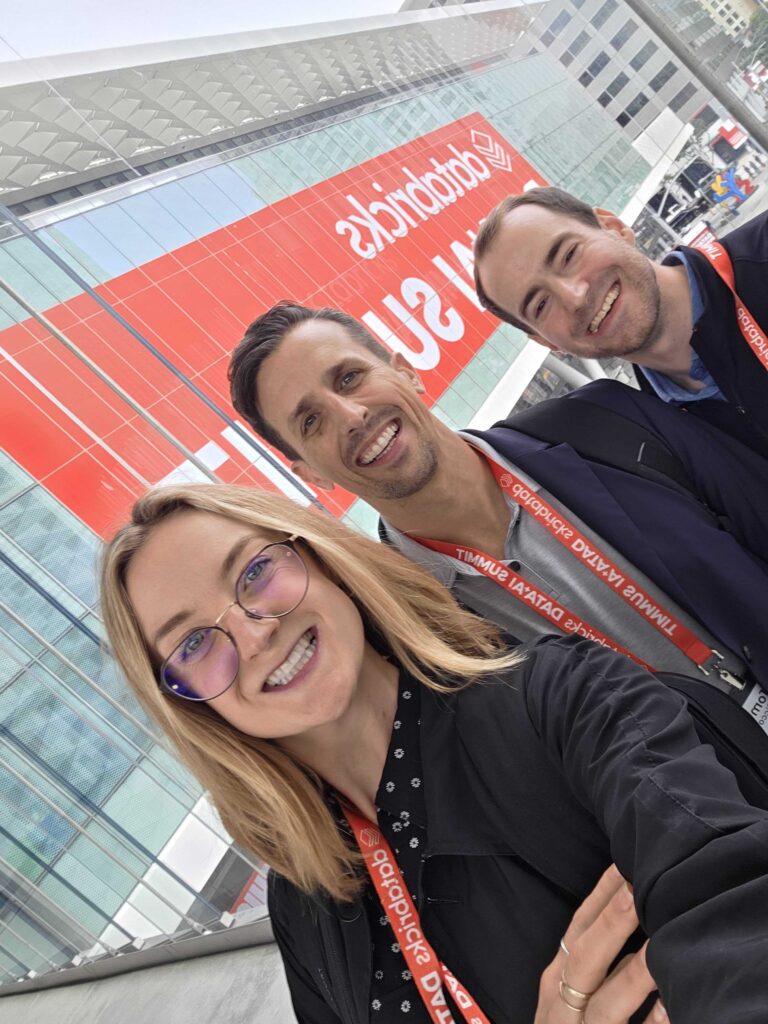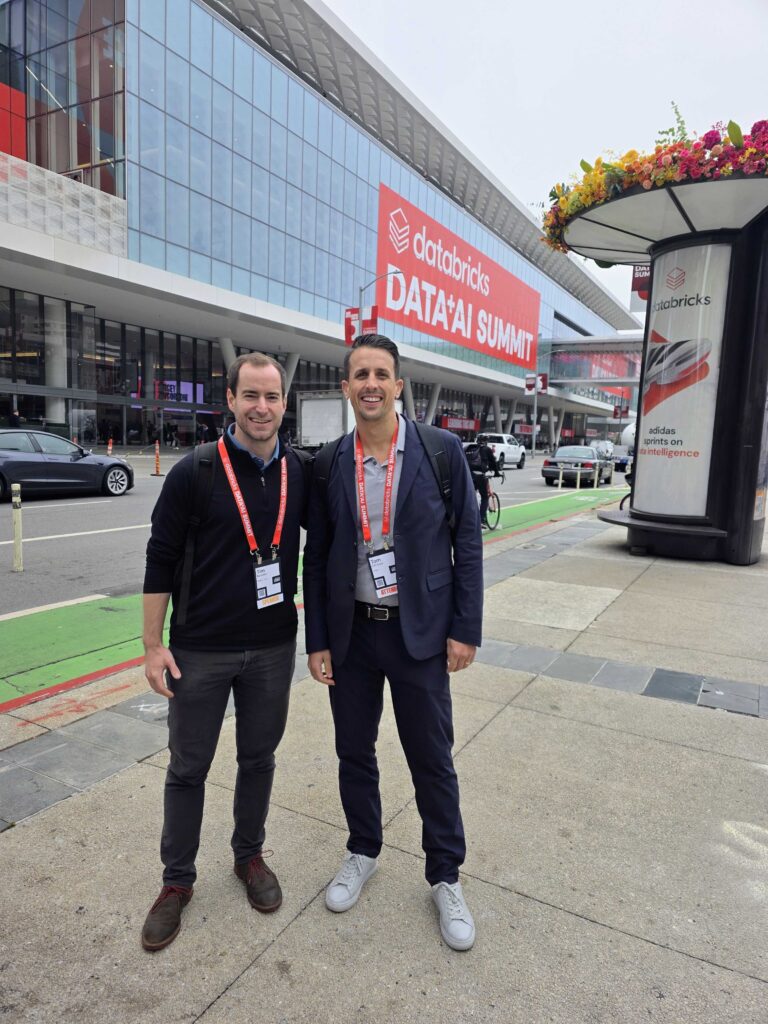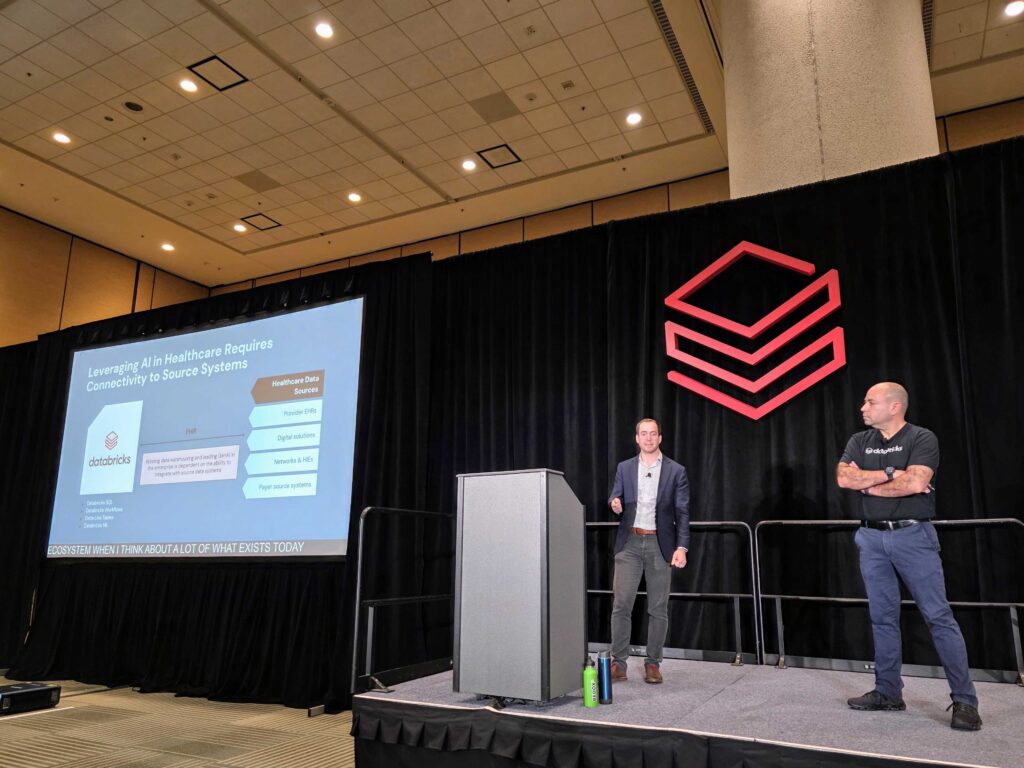This post was created by Redox attendees at DAIS 2025 – Tim Kessler, Field CTO; Tom DiCiccio, National Sales Director; and Solvei Wallace, Senior Partnerships Director.
Last week we had the opportunity to attend the Databricks Data + AI Summit. There’s something so energizing about walking the streets of San Francisco, seeing buildings decorated with Databricks logos and red lanyards hanging from the necks of 20,000 of our closest friends; the word “data” seemingly showing up in every sentence, regardless of relevance. (Queue the great debate: is it “day-ta” or “dah-ta”?)
Databricks CEO Ali Ghodsi opened his keynote with a critical truth: “Unified governance isn’t just a nice-to-have anymore—it’s more important than ever.” A recurring theme echoed loud and clear throughout the week: healthcare can’t build AI on untrusted, disjointed, or outdated data. At our hosted happy hour, I overheard someone put it perfectly: “Building the agent isn’t the hard part—it’s getting the right data at the right time that’s hard.”
Why this matters for healthcare
Healthcare is a data-rich, integration-poor industry. EHRs, labs, claims systems, devices, each speaking a different language, contributing to a fractured ecosystem. That’s what makes the Redox + Databricks partnership so powerful.
Redox delivers real-time, normalized, and standardized healthcare data directly into Databricks. That means data teams can skip the data wrangling and hit the ground running building out real world use cases. More than 10,000 health systems are already streaming live production data through the Redox Connection Network; this is meaningful data that can be routed into Databricks pipelines in minutes.
Because Redox translates all data into a consistent HL7® Fast Healthcare Interoperability Resources (FHIR®) format, what once took dozens of bespoke pipelines now flows into a single, harmonized clinical data mart. As Databricks Solutions Architect Matt Giglia shared in our joint speaking session:
“Does Databricks handle X12? Yes. Can you handle XML? Of course the answer is yes. But if you don’t use Redox, then you have a data engineering problem for each one of these types of file formats. Potentially now a data mart or a set of silver tables for each of these particular types of files. By going to Redox and having Redox change this into FHIR, now you have one standard way of ingesting the superset of your clinical data. Now you only have one data engineering pipeline to have to worry about to create a clinical data mart to get value out of this data really quickly to use it for machine learning, insights, and affecting patient care at the site of care.”
Unlocking real world use cases
The combined power of Redox and Databricks is already delivering measurable impact across healthcare and fueled many conversations with healthcare leaders at the Data + AI Summit. Health plans are able to surface care gap alerts in real time, directly into clinical workflows, to drive better member outcomes. Operational leaders can unify data across claims, case management, and member experience to streamline decisions. Internal teams can use clinical data to optimize care delivery and reduce intervention delays. Everyone needs to meet the mandate, but imagine what insights live within thousands of real time CCDs?
On the provider side, the value is just as clear. With Redox and Databricks, organizations can now activate AI directly at the point of care—embedding predictive insights and risk scores into clinical workflows to guide real-time decisions. Thanks to the new Redox EHR Write-Back Solution Accelerator, launched by Databricks Solution Architect Emma Yamada at DAIS 2025, provider orgs can now write AI-driven insights from Databricks directly back into the EHR. This unlocks smarter care delivery, improved capacity management, and better patient throughput—all powered by real-time data.
“This solution not only addresses current challenges in healthcare data integration, but also paves the way for more advanced analytics and AI applications in healthcare.”
What’s next for Redox + Databricks
The energy at DAIS 2025 made one thing clear: the future of healthcare AI hinges on trusted, timely, and unified data. That’s exactly where Redox and Databricks shine—eliminating data silos so organizations can focus on building solutions that truly move the needle. We left San Francisco inspired by what’s possible and more committed than ever to helping healthcare teams turn data into action.




